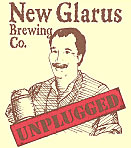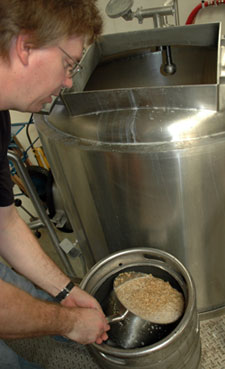Today’s New York Times features a must-read story on the front of the travel section headlined On a German Beer Trail, One More for the Road. Evan Rail (who recently also wrote about Czech beer innovation) set out with a definite purpose:
I wanted to try those German brews that had maintained a sense of local flavor, beers that were produced in their hometowns and, more or less, nowhere else.
In Cologne, I would drink Kolch, a light and fruity pale ale, one of the few beers protected by an appellation of origin as if it were a wine. In Leipzig, I would seek out Gose, a spiced amber beer that was out of production for two decades and that is just now making a small comeback. And in Bamberg, I would try the elusive rauchbier, a beer made with wood-smoked malt that is said to taste like liquid bacon.
Other beer pilgrims could have just as easily chosen other cities with great brewing histories “Dusseldorf, Dortmund and Munich come to mind,” but my trio seemed to offer the most promise and variety.
He starts in Berlin, where there were once 700 brewers of weisse beer and now the last two major producers have merged. But this isn’t a story about tracking down some ancient beers before they disappear – much as a blues fan might have headed to the Mississippi Delta a few years ago to see Frank Frost or Junior Kimbrough in a real juke joints.
The point of this story – to me, at least – is not history, or even tradition. The point is place.
Rail drinks Kolsch in traditional pubs where the average patron is “73 1/2 years old” and also goes clubbing with a much younger crowd in a packed club playing hip-hop at high volume. Even before getting there he finds another young and diverse crowd, favoring the local beer.
Why beer, in such a slick place? And why Kolsch?
“We’re proud of it,” Mira said. “I’m not necessarily proud of being German, but I am proud of being from Cologne. This is our beer.”
Reading this I couldn’t help thinking about tasting a wonderful Kolsch-style beer brewed in North Scottsale, Arizona. At an upscale brewpub decorated in a cowboy motif, where nobody talked about the fact that the beer was different or local. (And the brewery is long gone.)
We know, historically, that the Kolsch evolved into the style that it is for practical reasons (involving such arcane matters as brewing water).
But something else also happened along the way because it is brewed in Cologne and because it is different when you drink it in Cologne.
That’s why you should read this story.
(And we haven’t even got to the smoked beers of Bamberg or Leipzig’s Gose – tomorrow, perhaps.)
 This is beer and food done right, mostly for the food and wine crowd.
This is beer and food done right, mostly for the food and wine crowd. In all fairness to Todd Haefer – who writes a Beer Man column that appears in many newspapers part of the Gannett chain and already catches enough grief for some of his comments – he didn’t write the headline and the term didn’t appears in his copy, but here it is:
In all fairness to Todd Haefer – who writes a Beer Man column that appears in many newspapers part of the Gannett chain and already catches enough grief for some of his comments – he didn’t write the headline and the term didn’t appears in his copy, but here it is: So what about that? And who to ask? How about brewers? I printed out part of Russell’s column and took it to the recent Craft Brewers Conference in Austin. I showed it to a dozen brewers along with another old saying that farmers make wine and engineers make beer.
So what about that? And who to ask? How about brewers? I printed out part of Russell’s column and took it to the recent Craft Brewers Conference in Austin. I showed it to a dozen brewers along with another old saying that farmers make wine and engineers make beer.